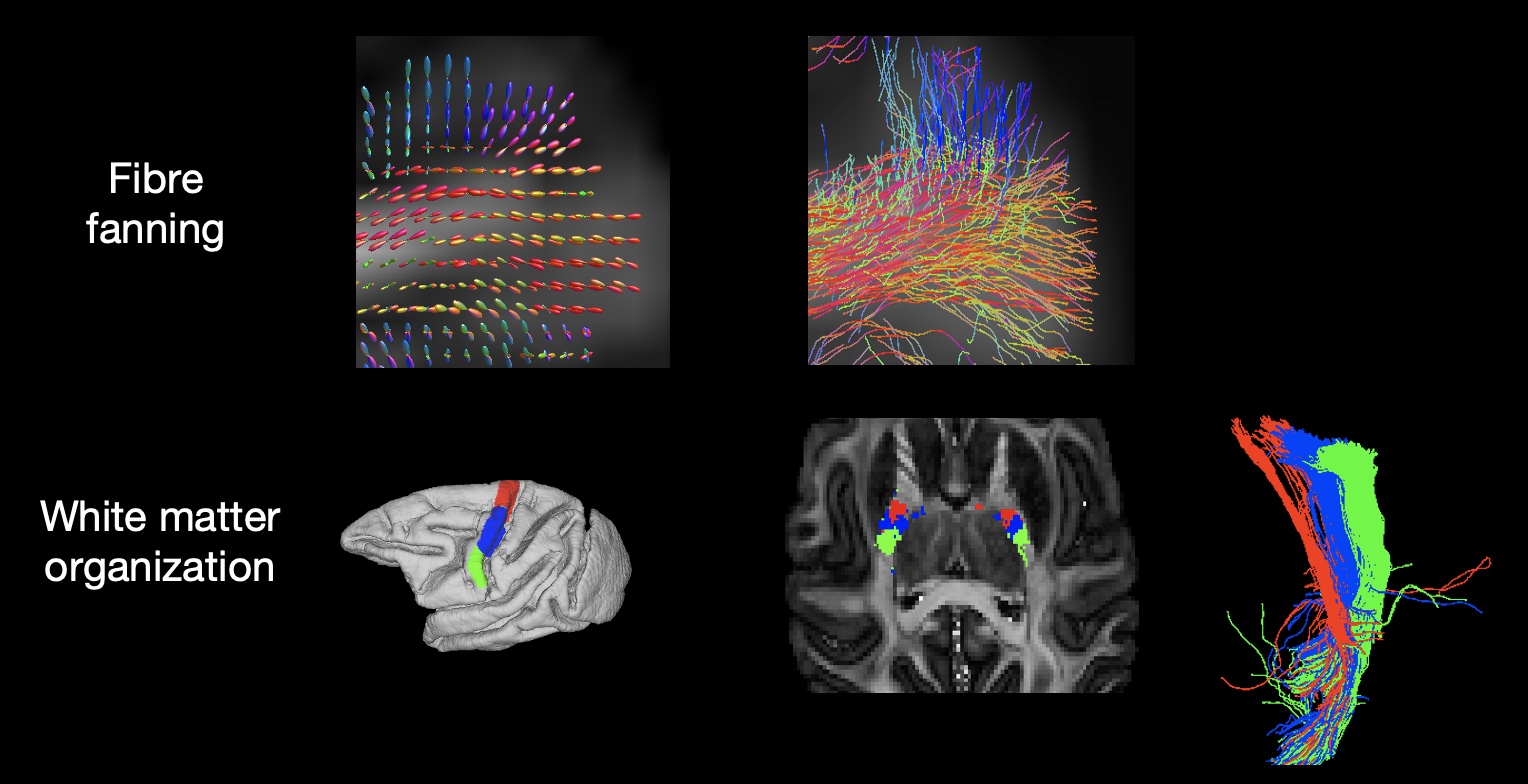Hybrid FODs and Tractography Outputs
Are you interested in exploring the hybrid FODS? Or perhaps you’d like to use them directly for tractography and discover their unique benefits? In this section, we provide a quick overview of the hybrid FODS, tractography, and their applications. The hybrid FODS will be made openly available for use.
Example hybrid fibre orientation distributions
Our hybrid dMRI-microscopy FODs are highly similar to those from diffusion MRI. The hybrid FODs can be visualized using tools such as mrview and fsleyes. Here is an example of a small region of hybrid FODs which closely match those obrained from CSD analysis of diffusion MRI.

Tractography
Stardard tractography pipelines can be appiled directly to the hybrid FODs to reconstruct fibre bundles spanning the whole brain. We employed XTRACT, a cross-species toolbox, to define seed and target regions of interest (ROIs) to reconstruct 42 different tracts.

The Figure shows four example tracts generated from the hybrid tractography at 0.6mm including the superior thalamic radiation (STR), frontal aslant (FA), corticospinal tract (CST) and forceps major (FMA).
Unique properties
Our hybrid FODs are maximally informed by microscopy data giving them several unique properties. For example, we observe beautiful fanning patterns of fibres projecting from the deep white matter into the gyrus that are typically difficult to observe in diffusion-only analyses. Further the hybrid orientations lead to interesting patterns of within-tract white matter organisation. For example, here we show separation of the white matter tracts through the internal capsule. For more detailed information, please check out the paper.
